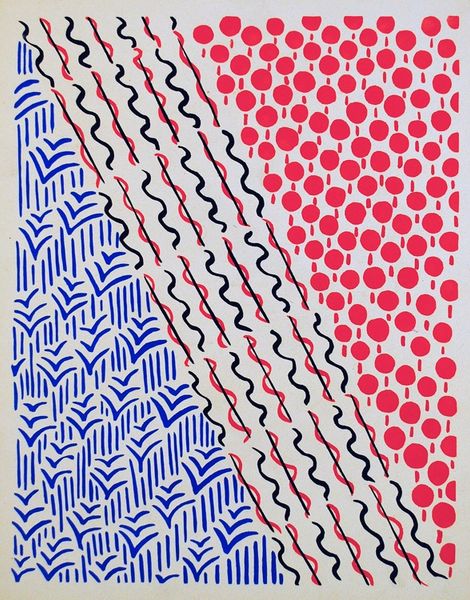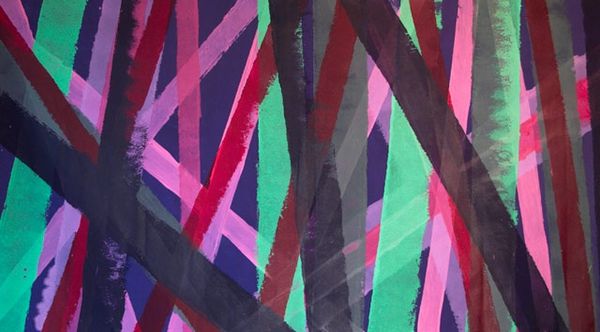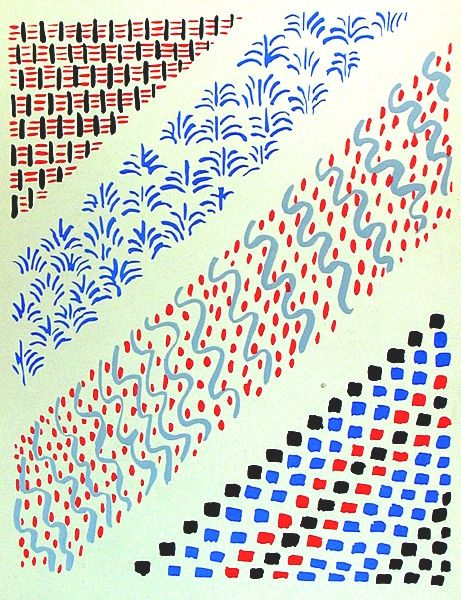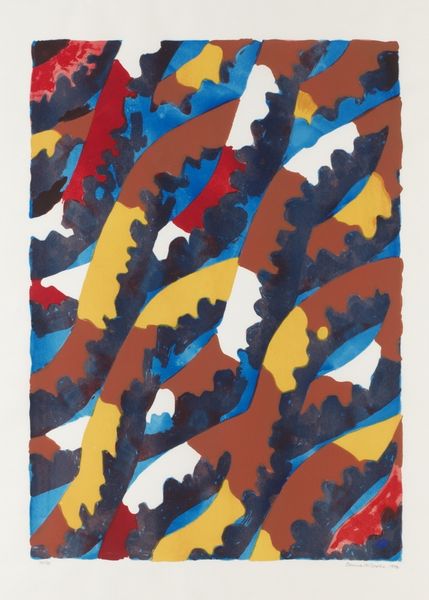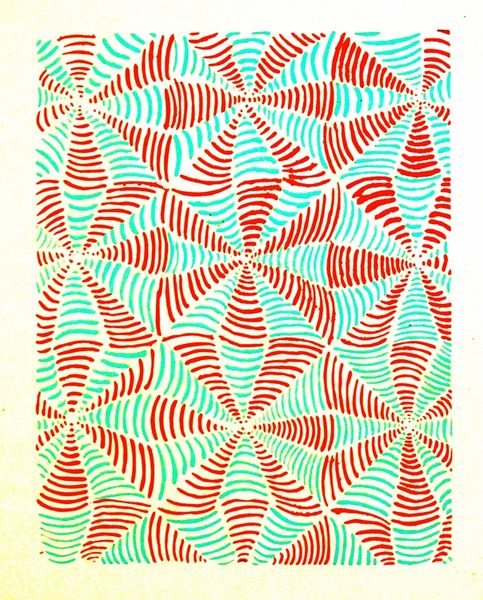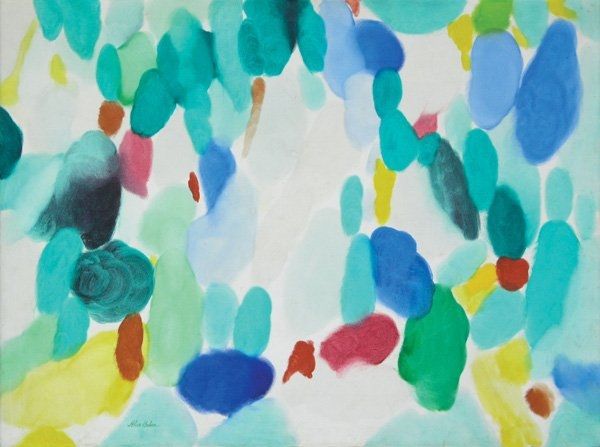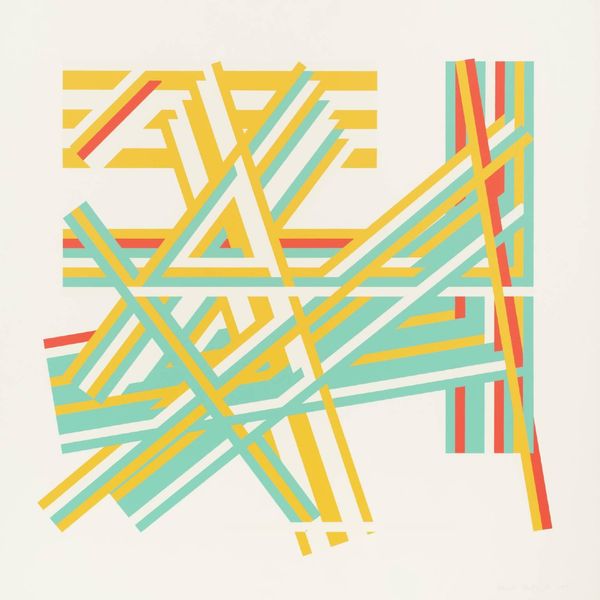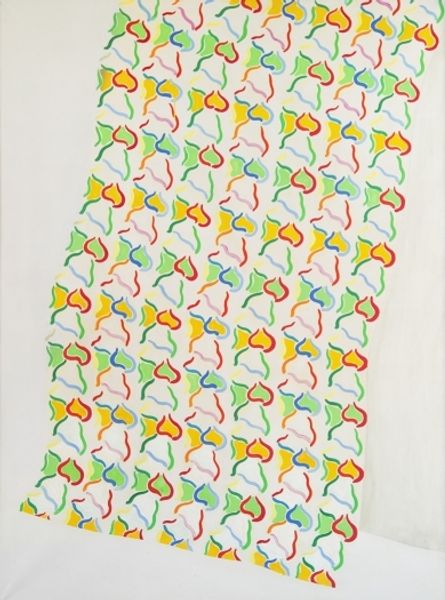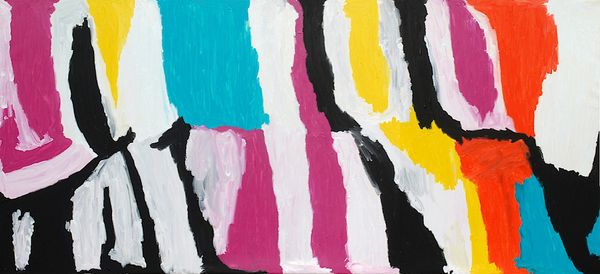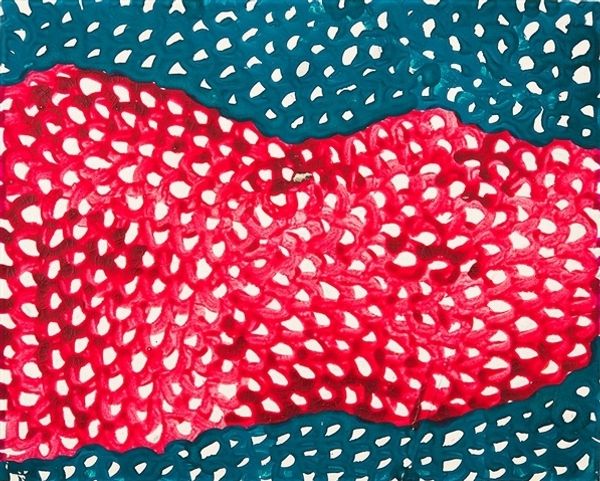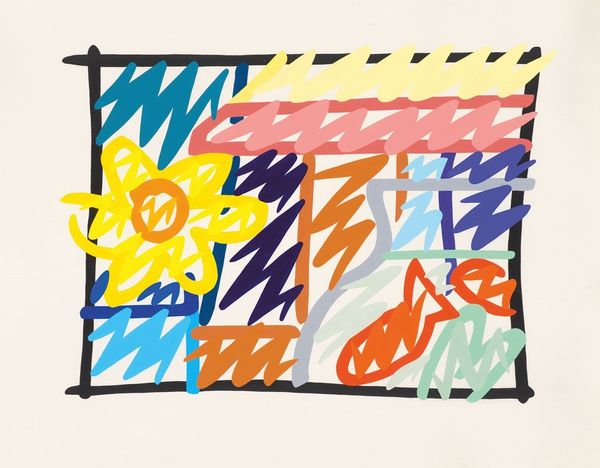
Copyright: Sonia Delaunay,Fair Use
Curator: Let's take a look at Sonia Delaunay's "Composition 39" from 1930. Looking at this painting, one is struck by its seemingly simple arrangement of geometric patterns, lines and colors. Editor: Immediately, it makes me think of visual alphabets or a system of coded information. The shapes themselves appear somewhat arbitrary, yet the contrasting patterns evoke such a strong sense of order and vibrancy. What are your thoughts about her construction choices here? Curator: Well, it is critical to view it within its time, post-World War One Paris. Sonia Delaunay wasn't just creating 'art'; she was deeply involved in textile design and fashion. Her creation should be viewed as an example of applied art. This is a product that would eventually adorn someone's wardrobe or their home. Editor: And the repetition? The swirling crimson designs remind me of ancient symbols—perhaps deliberately invoking ideas of cyclical time or even the cosmos in the collective unconscious? What of these very intentional arrangements? Curator: That would fit within her broader artistic goals. I consider that this composition comes across more as an inventory of possible designs to be taken from to apply on materials and goods. Think about its utility. What it produces or can produce, not just what it 'means'. The focus on accessibility through material goods, rather than simply an aesthetic encounter, reflects the constructivist spirit of the era. Editor: Fascinating how the industrial merges with primal imagery! There's something very human encoded here, even in its apparent geometric coldness. I find her interweaving of personal symbols into commercial application really admirable. Curator: Exactly! I think appreciating the original conditions is helpful. We have to think how many other possibilities of using this "design vocabulary" exist. These weren't mere artworks meant for a gallery; they were designs waiting to permeate everyday life. Editor: Thank you. I leave today rethinking just what this image meant in 1930 versus what it speaks to me today in 2024. A good conversation, all things considered. Curator: I agree. Looking through this material lens enriches its depth, as we have managed to unpack a painting whose message wasn’t self-contained, but out there in the social space and physical world.
Comments
No comments
Be the first to comment and join the conversation on the ultimate creative platform.
